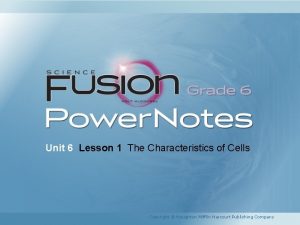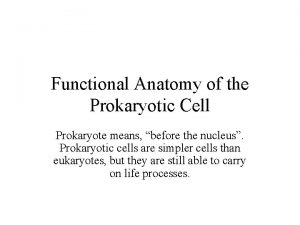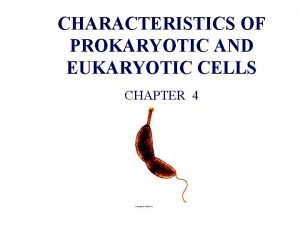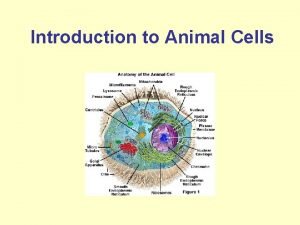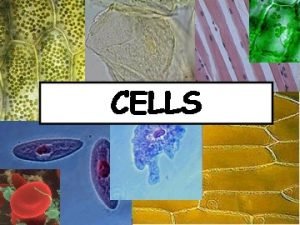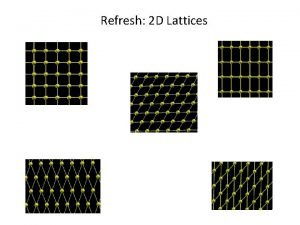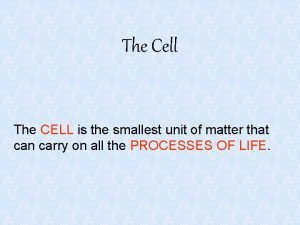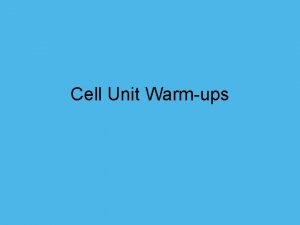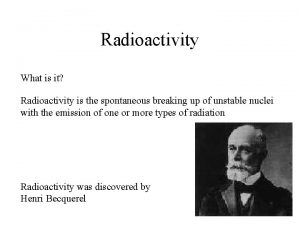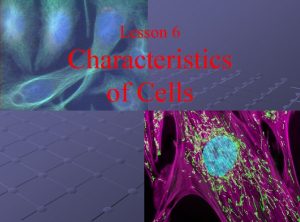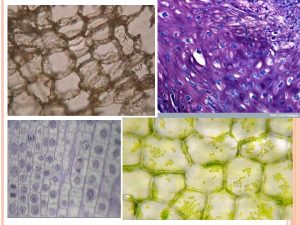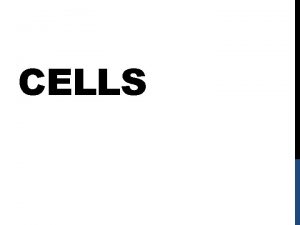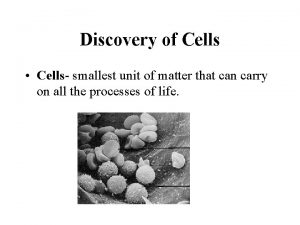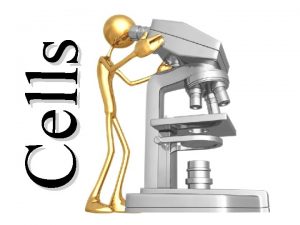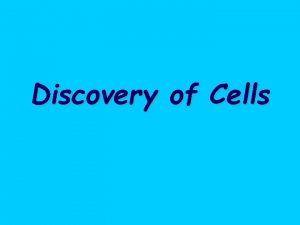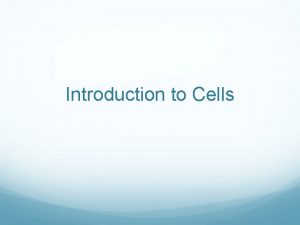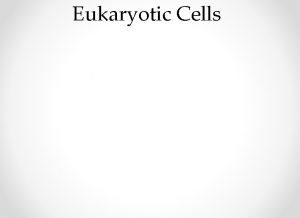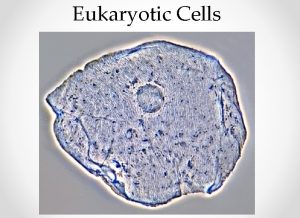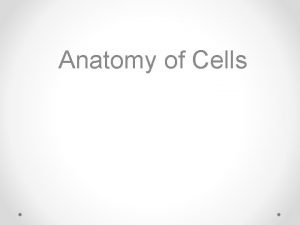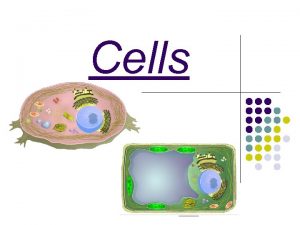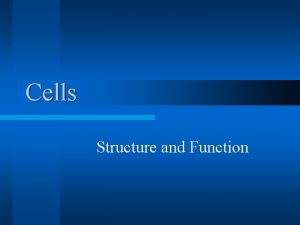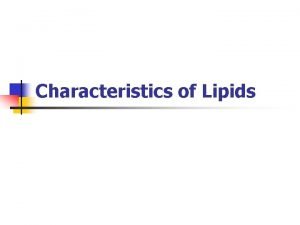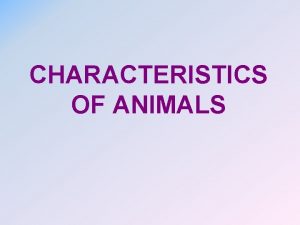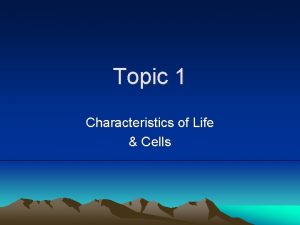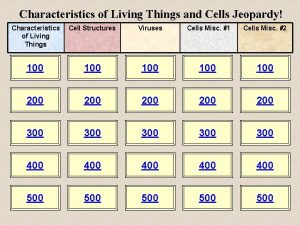Unit 2 1 Characteristics of Cells Discovery of






































- Slides: 38

Unit 2. 1 Characteristics of Cells

Discovery of Cells First discovered in 1665 by Robert Hooke Using a microscope, he saw little boxes in a slice of cork. He named them cells.

Discovery of Cells Anton van-Leeuwenhoek was the first person to see living cells He saw one-celled organisms in a drop of pond water He called them animalcules. (protists)

Discovery of Cells In 1838, Matthias Schleiden concluded all plants are made of cells. In 1839, Theodor Schwann concluded all animals are made of cells.

Discovery of Cells In 1835, Rudolph Virchow concluded all cells are produced by other living cells.

The Cell Theory (3) 1. All known living things are made up of cells. 2. The cell is the basic unit of structure and function in all living things. 3. All cells come from other living cells.

Unit 2. 2 Cell Structures

Cells are the basic unit of all living things They are the smallest unit that can carry out all the functions of life. Cells contain special structures that carry out the functions of life. The tiny structures are called organelles.

cell organelles the parts inside a cell they carry out functions (jobs) inside the cell

Nucleus “Control center of the cell” - Directs all cell activities Usually the easiest organelle to see under a microscope

Does it have a nucleus? Scientists group all living things into two categories based on their cells. Plants and animals are eukaryotes. An organism that has a nucleus is called a eukaryote. An organism that does not have a nucleus is called a prokaryote. (bacteria)

eukaryote a living thing whose cells contain a nucleus (eukaryotes) (You carry oats to the horse. )

prokaryote living things whose cells do not contain a nucleus (NO rhymes with pro)

Nuclear Membrane Surrounds the nucleus Controls what goes into and out of the nucleus

Inside the Nucleus Chromosomes – structures in the nucleus made of DNA – long, threadlike, material that contains the instructions for everything the cell does

chromosomes are make up of DNA is made up of genes.

Cell Membrane A thin, flexible barrier that surrounds a cell Controls what goes into or out of the cell Protects and supports the cell


Cytoplasm Gel-like substance inside the cell Fills the space between all the cell parts and gives the cell its shape

Endoplasmic Reticulum a. k. a. “ER” Moves materials around the cell

Ribosome Smallest and most abundant organelles Make proteins Proteins are very important for many of the cell’s activities

2 types of ER Rough ER Has ribosomes Smooth ER Does not have ribosomes

Golgi bodies Also called the Golgi apparatus or Golgi complex Sends proteins to where they are needed

Lysosomes Break down food, cell wastes, and old, worn-out organelles These materials are recycled and used again


Mitochondria “Powerhouse of the cell” Cellular respiration occurs here to release energy for the cell to use to make materials and move them around

Vacuoles Storage container for water, food, and wastes Vacuoles are larger in plant cells than they are in animal cells


Plant and animal cells have many structures in common. However, there are some structures that are unique to plants (or only found in plants).


Cell Wall Found only in plant and bacterial cells Rigid, protective barrier that protects and supports the cell Found outside of the cell membrane of plant and bacterial cells

Chloroplast Found only in plant cells (and plant-like protists/bacteria) Contains the green pigment chlorophyll Where photosynthesis takes place

Differences in Cells Usually the shape of a cell is related to its function (job) Plant cells have a box -like shape and animal cells do not have a particular shape Plant cells have some structures that animal cells do not – cell walls and chloroplasts A plant cell usually has one large vacuole and an animal cell usually has several small ones

Animal Cell

Plant Cell

Review Which organelle directs all cell activities? Nucleus Which organelle controls what goes into or out of the cell? Cell membrane Which organelle controls what goes into and out of the nucleus? Nuclear membrane What substance contains the instructions for everything the cell does? DNA

DNA and chromosomes Cytoplasm Nucleus Nuclear Membrane Golgi bodies Endoplasmic reticulum ribosomes Vacuole Mitochondria Lysosome Cell Membrane

DNA and chromosomes Nucleus Nuclear Membrane Lysosome Golgi bodies Cytoplasm Endoplasmic reticulum Vacuole Mitochondria ribosomes Chloroplast Cell Membrane Cell wall
 Onodi cells
Onodi cells Tubular lumen
Tubular lumen Parafollicular cells vs follicular cells
Parafollicular cells vs follicular cells Haploid and diploid venn diagram
Haploid and diploid venn diagram Why dna is more stable than rna?
Why dna is more stable than rna? Red blood cells and white blood cells difference
Red blood cells and white blood cells difference Eukaryotic vs prokaryotic cell
Eukaryotic vs prokaryotic cell Animal cell plant cell venn diagram
Animal cell plant cell venn diagram Prokaryotic vs eukaryotic cells venn diagram
Prokaryotic vs eukaryotic cells venn diagram Cell organelle jeopardy
Cell organelle jeopardy Masses of cells form and steal nutrients from healthy cells
Masses of cells form and steal nutrients from healthy cells Label
Label What animals have prokaryotic cells
What animals have prokaryotic cells Which compares prokaryotes and eukaryotes
Which compares prokaryotes and eukaryotes Nondisjunction in meiosis
Nondisjunction in meiosis Cells and life lesson 1 answer key
Cells and life lesson 1 answer key Unit 10, unit 10 review tests, unit 10 general test
Unit 10, unit 10 review tests, unit 10 general test Lesson 1 the characteristics of cells answer key
Lesson 1 the characteristics of cells answer key Characteristics of a prokaryotic cell
Characteristics of a prokaryotic cell Characteristics of prokaryotic cells
Characteristics of prokaryotic cells Characteristics of the animal cell
Characteristics of the animal cell What is the smallest unit of life
What is the smallest unit of life Cells are the smallest unit of life
Cells are the smallest unit of life Types of unit cell
Types of unit cell A cell is the smallest unit of
A cell is the smallest unit of The cell is the basic unit of life true or false
The cell is the basic unit of life true or false Unified search vs federated search
Unified search vs federated search Discovery education salem witch trials
Discovery education salem witch trials The great discovery sean covey
The great discovery sean covey Center for discovery sullivan county
Center for discovery sullivan county Requirements discovery techniques in software engineering
Requirements discovery techniques in software engineering Who discovered radioactivity
Who discovered radioactivity Discoveryproonline
Discoveryproonline Newport pointe discovery bay
Newport pointe discovery bay Naviance self discovery
Naviance self discovery Nature reviews drug discovery
Nature reviews drug discovery Show ip nbar protocol-discovery
Show ip nbar protocol-discovery Smart data discovery
Smart data discovery When did joseph lister make his discovery
When did joseph lister make his discovery

















